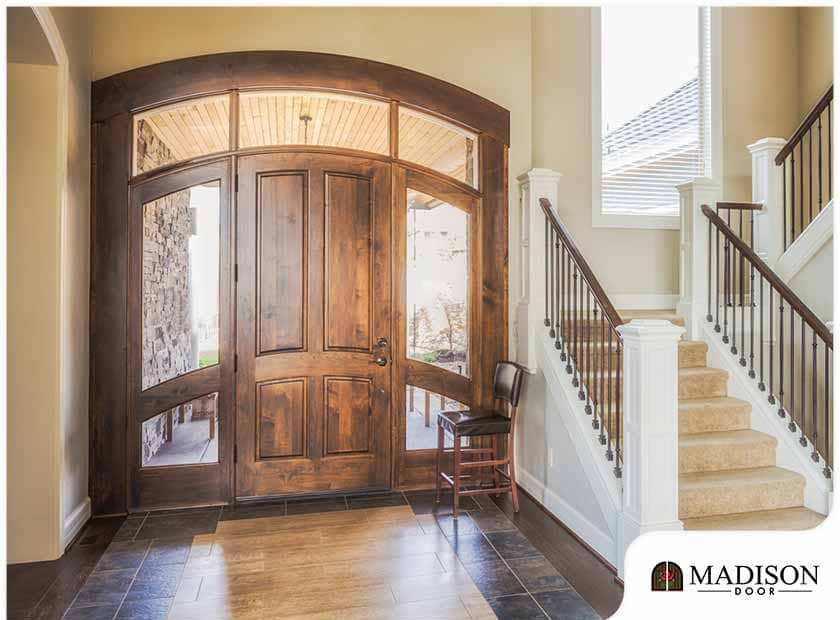Your entry door plays a major role in your home’s curb appeal. If you want to enhance the beauty of your home exteriors, choosing a new entry door is a smart idea. Designing and building one may seem like an easy process, but it’s helpful to understand some of the technical terms.
There are three major components of an entry door that you need to keep in mind: frame, unit and hardware.
Door Frame
Constructing the exterior door frame is the first step in building an entry door. This begins with an opening using the wall’s framing, which is where the door will reside. Here are the important parts of the door frame:
- The door frame, which is the structure attached to the rough opening, holds the door panel and sidelights.
- The door jambs are the vertical components found on either side of the door frame. One jamb contains the mounting hinges, while the other contains the strike plate for the latch. The door header, meanwhile, is the horizontal section of the door frame.
- The door trim is the decorative piece placed over door frames to hide the gap between the opening, jambs and header.
- The door sills are the bottom component of the door frame that fastens to the floor. To protect it from weather elements, a threshold is placed over the sill.
Door Unit
After building the door frame, door installation companies will prepare the door unit itself. This should include everything from the door panel to all the decorative details. The following are some of the parts you may see in a door unit:
- The door panel or door slab swings open and closed, and most people refer to it as the door itself. A complete door panel often consists of smaller panels set between the mullions and stiles.
- Glazing is the glass placed in a door panel or transom. It typically comprises two glass panes with argon gas in between to provide additional insulation.
- Grilles between the glass are installed between the panes permanently while regular grilles are placed over the top of a single pane to create the illusion of divided lites.
- A stile is a vertical component on either side of a door panel. The hinges attach to the hinge stile while the lockset attaches to the lock stile. To provide extra support, some door units include a center stile.
- A transom is a horizontal beam at the top of the doorway. This separates the door from an upper decorative window installed between the transom and header.
Door Hardware
Once the door panel is ready for installation, it’s time to add the hardware parts, such as hinges and locksets. These parts allow you to open, close, and lock your entry door:
- A door handle or a knob is used to operate the door latch. This allows the panel to be released from the frame to open and close. Handles come in plenty of forms, from lever handles to door knobs.
- Door hinges allow the door to swing open and close. Depending on their size, most front doors have three to four hinges. Some hinges may include a strap hinge or a radius hinge.
- The latch is the metal piece that sticks out from the lock stile. It secures the panel in a closed position. When you turn or press the door handle, the latch retracts and opens the doors.
- The lockset includes all the mechanisms required to lock the door, including the door handle, latches and additional hardware, such as the deadbolt.
- Weatherstripping is a narrow strip made of durable material, such as silicone, rubber or foam. This seals the gaps between the door panel and the surrounding frames.
Whether you are installing new patio doors or an entry door, turn to the pros at Madison Door. Our experts can help you design a beautiful and durable door unit that improves your home’s curb appeal and ensures security. Call us today at (973) 822-1693, or fill out our online contact form to get a free quote.
